Feeling The Winds of Change
Each year Lawn & Garden Retailer asks a number of well-known industry professionals to make their predictions for the new year. This year is no different. We have different perspectives from a retailer, a few consultants, a researcher and even a future industry leader (one of our new columnists, Emily Stefanski). Actually, several of them are regular Lawn & Garden Retailer writers, columnists, advisory board members and more. Please enjoy and feel free to reevaluate at the end of 2007 to see how many of the predictions actually came true. (Believe it or not, most of the predictions really come to fruition. These leaders really do know their stuff.) Keep in mind, these are only predictions, so you don’t have to base your business off of them, just take in the information and see how it may be able to help you.
Making Sure Change Is Good
Dale Bachman, Bachman’s, Inc. [email protected]
The November 2006 elections set in motion a wave of change that will move into 2007 and beyond. On the vital issue of comprehensive immigration reform, it seems clear that rallying against “illegal immigration” and being for “enforcement only” did not win. What is less clear is whether leaders will now lead us to enforcement, workable temporary worker programs and a practical approach for addressing the status of hard-working and otherwise law-abiding immigrants. We must continue to work together to find solutions to the complex, highly emotional issue of immigration soon. Let’s hope 2007, at long last, will be the year for Congress to enact comprehensive immigration reform.
The future is rushing at us faster than ever. We live in a time of unprecedented and relentless change. In July, I had the pleasure of hearing Jim Carroll make a presentation at the ANLA Annual Convention and Learning Retreat. Jim shared his thinking about the times we live in and the imperative to innovate, change, adapt and evolve as the very nature of our industry changes.
Here are a few of Jim’s points to consider as we move into 2007:
- Forget everything you know. Relearn quickly.
- Get young. Take time to listen to anyone at least 10 years younger than you are.
- Appreciate wisdom. Listen to anyone more than 10 years your senior.
- Forget permanence. Everything seen is transient.
- Make decisions. Make things happen.
- Change your focus. Focus on the realities of the future.
- Trap creativity. Think growth.
- Think clear and present opportunities.
- Get excited. Be happy.
The future is bright if we can adapt to the rapid pace of change with bold, innovative thinking. Let us not miss the future.
The Do-It-For-Me Generation
Kip Creel, StandPoint, Inc. [email protected]
Has the do-it-yourself (DIY) gardener abandoned his or her favorite outdoor pastime? It seems this may be the case; lawn and landscape services appear to have sprouted like weeds and invaded neighborhoods everywhere. In truth, though, the answer is not entirely; however, there is a growing trend among aging homeowners to hire independent lawn and landscape services to handle many of their gardening and landscaping needs.
For years, the affluent and influential Baby Boom generation defined the DIY lawn and landscape industry. Independent garden centers (IGCs), a predominant source of gardening products during these years, flourished as this huge population segment began to purchase their first (and subsequent) homes.
Today, the gardening industry, along with Baby Boomers, has reached maturity. Aging Boomers are moving away from DIY projects and are instead hiring outside services, such as landscapers, lawn services and other “green” service-related products. More dollars are being spent to create livable outdoor spaces, such as hardscapes, outdoor decorating and waterscapes, than ever before. Large, mature plants and trees are being installed instead of the “watch and grow” variety. Con-sumers other than Boomers, such as first-time homeowners, seem less interested in DIY gardening and more interested in spending surplus income on non-related industries, such as travel.
How do these consumer trends affect the gardening industry? First, retail-related market volume and customer counts are down. [IGCs] are using various methods to increase customer counts by offering special incentives to get customers in the door. Though volume and store traffic is down, the market will continue to increase, via larger purchases (such as specimen plants and trees), at an annual rate of 3-5 percent. Second, buyer preferences for perennials, shrubs and trees continue to be a strong growth market for the IGC. These items offer a more permanent landscape solution for consumers. Third, the proliferation of green suppliers throughout the past decade has created an imbalance in the product supply and demand chain. As this imbalance fluctuates, expect consolidations or “co-opetitions” (cooperative actions among businesses in competitive markets) to occur over the next few years. Finally, in an attempt to draw more consumers into stores, the industry needs to focus on under-served segments of the population, such as first-time homeowners, condominium dwellers and ethnic consumers.
Helping The Talkers And Doers
Bill McCurry, McCurry & Associates, [email protected]
This time of year the airwaves are filled with talking heads trying to explain what happened in 2006 and why. Meanwhile, the real people are out in the trenches selling product, buying product, employing people and coping with market fluctuations. The year 2007 will be no exception. There’ll be the talkers and doers. Happily, our industry is blessed with doers who accomplish great things, sometimes against almost insurmountable odds.
I’ll let others write about demographics, market shifts and even those pesky paradigms that shift from place to place. While these are all important, perhaps we should reflect on what a Michigan garden center owner asked recently, “We can’t afford any more things falling through the cracks. We have close to 100 employees during the season, so how do we patch the cracks?” It’s a really provocative question. Her husband opened the center more than 25 years ago. She joined him 16 years ago, and they continue to grow. However, each new employee came on without any formal systems for management, process or control. You guessed it; today they’re seeing what this deferred management growth has cost them.
What’s their solution? They’ve committed to investing in their systems and their management. They’re buying books for senior employees to read and share at newly established weekly meetings. They’re budgeting for key employees to attend industry educational events with them. They wouldn’t expect their forklift to run forever without maintenance and a tune-up. They’re no longer expecting their staff to grow in place without guidance and investment. It’s open-book management, and it’s working for them.
Some pundits are forecasting 2007 will be a challenging year for our industry. Every year brings more challenges that are successfully met only by those who leverage their teams to capture the opportunities that abound.
Big Box Differentiation
Stan Pohmer, Pohmer Con-sulting Group, [email protected]
This is the year the IGCs can finally differentiate themselves from the big boxes and not only realize sales and profit potential but build customer loyalty!
More than ever, progressive IGCs will sell the experience plants and flowers provide and not just the product. They’ll focus their displays and advertising on lifestyle and the benefits our products offer and not just play the price game. (Remember… if you sell your product based solely on the merits of price, you put yourself at the mercy of your dumbest competitor!) Progressive IGCs will invest in merchandise displays and educated and personable staff. (Note: these do cost money, but they need to be viewed as an investment in future success and not as a cost!)
Progressive IGCs will execute integrated marketing communication and bend over backwards to reach their most valuable customers (that 20 percent of your store traffic that provides you with 60 percent of your sales and 80 percent of your profit). In addition to newspaper advertising, regular E-mail and direct mail newsletters, loyalty programs, reminder services and “by invitation only” events will be embraced. And personalization will be the name of the game, reaching each customer as an individual, not with a group mentality. Offering services the boxes can’t, such as potting stations, informational tear sheets and providing suggestions on tie-in items that will help the consumer realize success and satisfaction with their purchase, will further build a relationship that breeds loyalty.
This year is the year that progressive IGCs recommit themselves to serving the consumer and delivering on their needs and dreams. Consumers will be selective in where and on what they spend their hard-earned money on. Those retailers who make the effort to make the difference for their customers will be rewarded. Those who don’t…
Learning To Listen To The Customer
Judy Sharpton, Growing Places Marketing, [email protected]
As I predicted in last year’s industry forecast, 2006 was the year of listening (or not listening) to the customer. All of retailing has either paid attention or continued to decline. Garden product suppliers both those offering “take out” (retail garden centers) and those specializing in “catering” (landscape services) have either listened or declined. Many stores and traditional landscape service companies have adopted new services to meet the continued growth in help-me-some-but-let-me-do-some garden installation services. Stores have created a product category right in the store to meet this new service expectation from younger customers and Baby Boomers. Several stores and service com-panies have also expanded their offerings in container gardening and related outdoor living products like outdoor fireplaces and outdoor kitchens. Some have not; they still aren’t listening.
New data from Kip Creel at Standpoint Research underlines the necessity to listen to our customers. Kip has been telling trade audiences over the past few months about Gen X and Gen Y customers who want “product” instead of “process,” want live plants integrated into the larger category of outdoor living, get the majority of information about outdoor living from TV and the Web and is expected to help drive sales of outdoor kitchens to more than $2 million next year. This group also thinks garden centers are old-fashioned places where only older people shop. Unfortunately, in many cases, their perceptions are reality.
I predict for next year and many Á years to come the willingness to listen to consumers who want an easier-to-use, less-time-consuming product will be the difference in continued decline or new life for our industry. Short of developing a plant that can be made to bloom by using the keys on a Blackberry, listening and responding, with stores that are more modern and easier to shop and products that are packaged better and easier to use, could attract time-starved consumers of all ages back to gardening as an element of their outdoor living plans. Are you listening?
Millennial Generation Perspective
Emily Stefanski, University of Florida, [email protected]
Being part of the Millennial Generation (or Generation Y, born between 1977 and 1998), I may have a slightly different perspective on the opportunities I foresee for IGCs in 2007. Look at the world we live in now; coffee isn’t just coffee anymore, restaurants don’t concentrate on only their menu items and amusement parks aren’t just about rides. People don’t go to these places for the products or services alone, they go there for the overall “experience.”
Retailing has undergone changes over the past several decades. Retail started as a goods-based economy, which has evolved with the addition of services that have differentiated businesses and their products (i.e. garden centers offering an installation service with the plant material purchased). Now retailing is undergoing yet another evolution, that of staging experiences and making the business into a memorable event for the customers. For Starbucks, it’s about the coffee experience and ambience. With Johnny Rockets, consumers know they can get a hamburger anywhere; and with Disney, the rides are a side note to consumers compared to getting their pictures taken with Mickey. With all these places, the customer takes something away, not just a good or service, but a lasting memory. And these memorable experiences keep the customers coming back time and time again.
IGCs can evolve, too. You have the opportunity to embrace the experience within your own garden center, and that gives you a competitive edge over the box stores. We’ve all heard how excellent customer service sets the IGCs apart from the mass merchants. This fact is true for any independent retailer; however, that’s only part of the overall experience. There are a variety of ways for consumers, especially in my generation, to spend their discretionary income on any given weekend and the challenge IGCs have is to lure that discretionary income to their stores. Superior customer service may not be enough. Thus, to create that total experience, think of ways your garden center can become memorable in your customers’ eyes by appealing to all their senses.
These ideas and more are sure to leave a lasting memory for your customer and, hopefully, entice the Millennial Generation to “experience” your garden center! Best wishes for 2007!
Helping You Help Your Customers
Jack Williams, Ecke Ranch, [email protected]
Garden centers of all sizes, both independent and mass market, have spent the last few years placing more emphasis on how to provide a good shopping experience for their customers. This focus has been on both the selection of [plant] genetics and the presentation of products in stores. As a result, the look and feel of POP and other retail sale support has certainly evolved! From once being very generic, today’s POP is more attractive and informative. By providing more than just inspiration for gardeners, it has helped consumers use our plants more effectively and with better results. While the work in this area is far from over, it is also time for further evolution of the retail experience!
Looking forward, the next trend that should start finding its way into retail will be better packaging of plants! In Europe, this is already alive and well. With genetics becoming more easily sourced by all suppliers, the focus is becoming less on what is new in genetics to what is new in how to present the genetics we have!
In this environment, it is surprising how ordinary plants can be made more attractive and get the attention of shoppers rather than being passed by. It is not going to be about, “I have got to have the newest petunia!” to be successful but more about, “How do I make that petunia even more attractive to me as a consumer?” We need to be thinking about, “What do I do to make this plant even more interesting to the home gardener?” Does this involve some of the new bio-friendly pots? Does this involve dressing this plant up and creating an interesting “value-added” product? I think it can be both of these and more.
The key is to be innovative and creative with the “package,” and we are definitely not talking about pot covers, sleeves and tags to do the job! We are talking about creating themes with the plants and providing something that showcases them in ways consumers may not have expected. If you are in need of some European inspiration, there are several shows in Europe that can help. Visit the Lawn & Garden Retailer online calendar at www.lgrmag.com to see what shows are available.

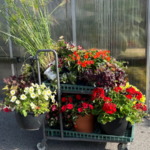

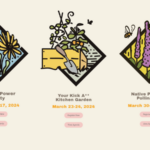


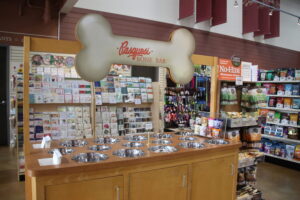


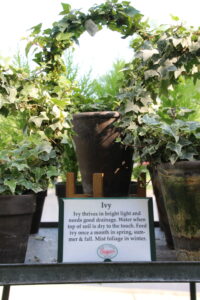
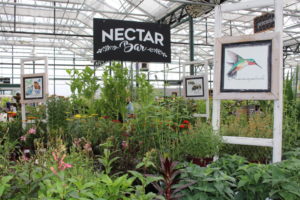
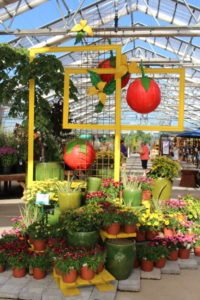

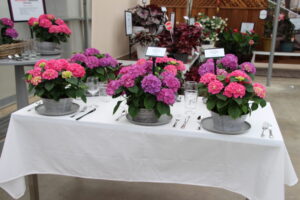

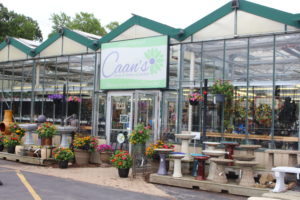

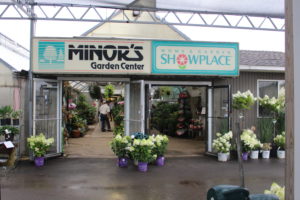
 Videos
Videos





